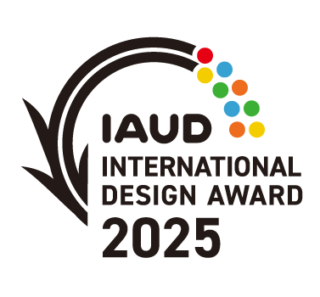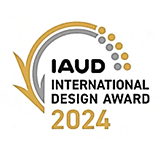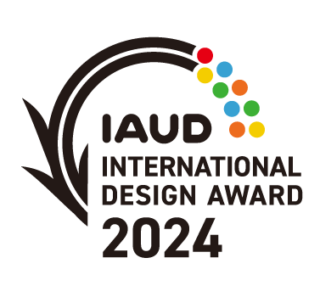IAUD International Design Award Citations 2023 CHAIR'S INTRODUCTION & FULL CITATIONS
2024.02.20 Updated
CHAIR’S INTRODUCTION 2023
The Chair of IAUD International Design Award 2023 Selection Committee
Executive Board (Former President), EIDD Design for All Europe /
Founder, Innovation for All AS

In troubled and difficult times, with global challenges and international tensions mounting on every front, the IAUD Design Awards do more than offer a ray of hope, by putting the spotlight on human needs in all their diversity and our collective aspirations for increased quality of life and opportunity in a more equitable world, point a way to a better future.
This year’s award winners do exactly that, with fine examples of how design and innovation can make a crucial difference, not just in terms of the products in our homes and the services and buildings we use on a daily basis, but across so many sectors of our society. A key feature of 2023 was the range and variation of the successful candidates, from small and micro local initiatives, government driven solutions, entrepreneurial start-ups, commercial brands to medical innovations; aiming to change for the better. Collectively they reinforce the fact that UD and Inclusive Design are powerful drivers for innovation, not just for special needs provision, but across every field of mainstream design.
2023 has also been the year in which AI became an everyday reality, with its rapid development and potential reach into so many areas of our life it offers almost unbound potential benefits, but can equally turn out to be a major threat to peace and stability if used unwisely or maliciously. It will most certainly bring big changes into our lives, impacting on the way we work, live and play, and as such will undoubtedly prove a big new opportunity and challenge to Universal Design, which can and must play a significant role in shaping its application for the benefit of humankind.
If AI-based and inspired innovations are to prove ethical and sound, it is crucial that we develop an approach, methods and tools based on the perspectives of human diversity and inclusion. Doing this will ensure more sustainable, resilient and appropriate solutions, that also will be more viable commercially, and it is important to recognise that we in the UD community have a head start in this, as a key element in our practice has been the development of a rich toolkit of user-centred methods and an extensive, collaborating network of representative organisations.
Throughout the history, solutions originally intended for special needs and user groups have become mainstream because they are better for all. Remote controls and predictive text are just two examples of this. Both have found a central place in our everyday lives in so many implementations that it is hard to believe they originated as solutions to problems faced by severely disabled users, and indeed predictive text is itself an early example of artificial intelligence. Importantly, focusing on the needs of a small number of lead users can result in innovative products that can become game changers.
The value of unpredictable and inventive ideas resulting from genuine user research can easily be underestimated. Exploring questions such as “what is the real problem, and for whom” first, can lead to very different design and product development scenarios with surprisingly different outcomes. This year’s Grand Award winner A Gathering Place for Tulsa is a fine example of Universal Design in practice, and one we can all learn from, informed by extensive citizen consultation and engagement, and underpinned by a variety of highly effective design methods.
Some of the projects submitted this year could have benefited from a design research process that placed greater emphasis on engaging with users, especially in those important open-ended early stages where a wide range of user perspectives can significantly inform the orientation and outcomes of the team’s work, leading to truly innovative solutions. It can pay off going that extra mile, and the overall quality of user involvement is one of the things the jury pays particular attention to in evaluating each year’s entries.
What IAUD has achieved over the past 20 years is quite unique. With a membership of famous and global Japanese brands IAUD has been championing and developing the field of universal design on the world stage since its inception, through a series of inspiring and motivating conferences, coupled with programs aimed at sharing and disseminating knowledge and competences, and of course the International Design Awards themselves.
As chair it has once again been a great honour to lead the jury and I am grateful to be given the opportunity. It is always a very inspiring and educational task, in particular thanks to such a knowledgeable, engaged and articulate selection of fellow jury members.
Citations for Grand Awards (1)
Citations for Gold Awards (12)
Citations for Silver Awards (9)
Citations for Bronze Awards (10)
Citations for Award of Excellence for Student Design Challenge (1)
Citations for Student Design Challenge Award (1)
Announcement of IAUD International Design Award 2023 Winners
JUDGING CRITERIA
The past ten years of the awards have seen sustained progress, and to maintain this momentum the Judging Panel is looking for entries that:
- Push the boundaries of Universal Design in new and exciting directions.
- Prioritize high-quality user-based research, in particular direct engagement with disabled users and others at risk of being excluded from the market.
- Consciously avoid exclusivity arising from innovations and new technologies, in particular for specific groups of users.
- Go beyond conventional ‘usability’ by identifying specific problems relating to diverse groups of users and delivering solutions to them.
- Demonstrate long-term corporate commitment to UD, supported by a company-wide vision and plan to ensure continuing improvement.
- Are supported by honest and informative promotional material.
Essential Goals of the IAUD International Design Awards Program
- Sustainable and Universal: The entry presents concepts and practices suitable for creating a sustainable, mutualistic society.
- Diversity and Inclusion: The entry shows an understanding of the diversity of traditions, cultures, lifestyles and people, and does not exclude minorities but rather expressly includes them; and thus contributes to realizing a qualitatively rich and happy way of life.
- Safe and Secure Society: The entry contributes to the construction of mechanisms, systems and morals appropriate to a society that protects human rights and respects the humanity of every individual.
- Spontaneous and Sustainable Dialogue: The entry serves to build ongoing exchanges and relationships between corporations, design practioners and clients, government, research institutions, NPOs, and citizens.
- Passing-on of Knowledge and Skills to the Next Generation: Through disseminating universal design and knowledge about it, the entry serves to cultivate individuals suited to lead the next generation.
IAUD International Design Award 2023 Selection Committee
- Chair of the Selection Committee: Onny Eikhaug (Executive Board (Former President), EIDD Design for All Europe/Founder, Innovation for All AS, Norway)
- Co-chair of the Selection Committee: Fumikazu Masuda (President, open house inc./ Visiting Professor, Nagoya University of Arts and Sciences, Japan)
- Advisor to the Selection Committee: Roger Coleman (Professor Emeritus of the Royal College of Art, UK)
- Members of the Selection Committee:
- Francesc Aragall (President, Design for All International /Founder, ProAsolutions, S.L., Spain)
- Thomas Bade (Founder/Partner, Institute for Universal Design, Germany)
- Valerie Fletcher (Executive Director, Institute for Human-Centered Design, USA)
- Rama Gheerawo (Director, Helen Hamlyn Centre for Design, Royal College of Art, UK)
- Antika Sawadsri (Dean, School of Architecture, Art, and Design, King Mongkut’s Institute of Technology Ladkrabang, Thailand)
- Keiji Kawahara (Professor Emeritus, Nagoya University of Arts and Sciences / Executive Director, IAUD, Japan)
About SDGs
"Inclusivity", the basic philosophy of Universal Design, is essentially the same as the principle of the SDGs, "No one should be left behind." Therefore, it can be said that UD and SDGs are linked. In order to make this easier to understand, we display the relevant goals of the SDGs with each award-winning work.
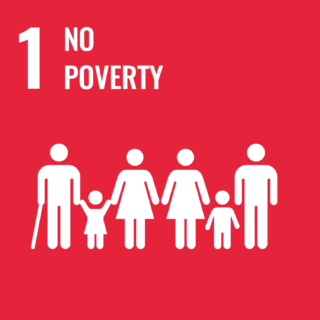
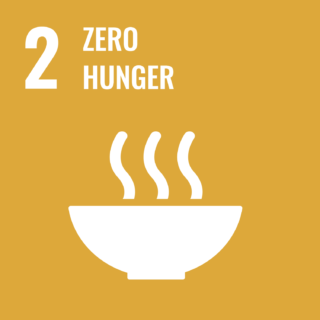
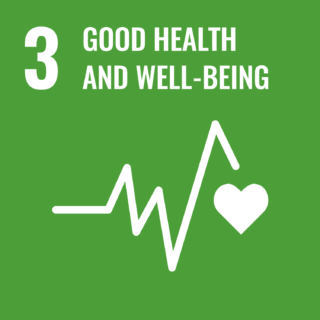
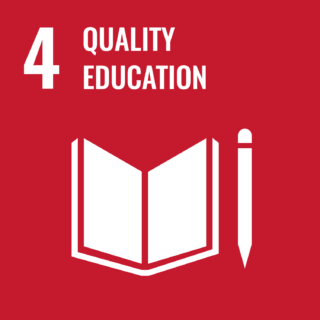
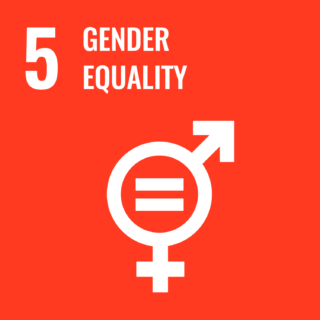
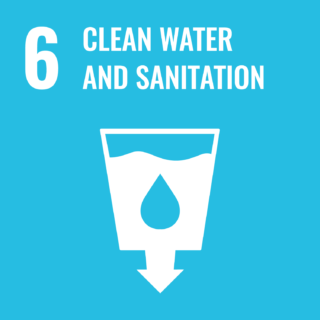
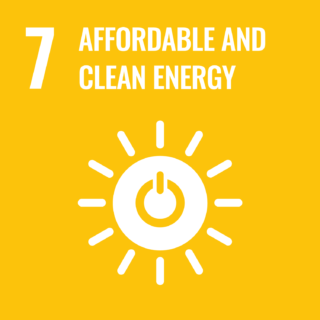
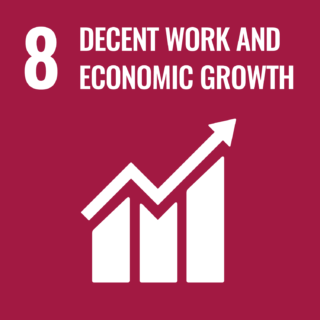
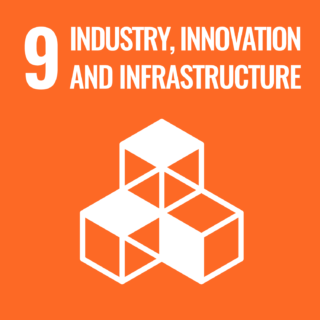
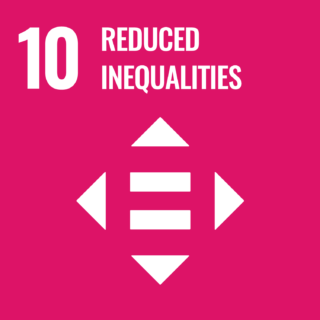
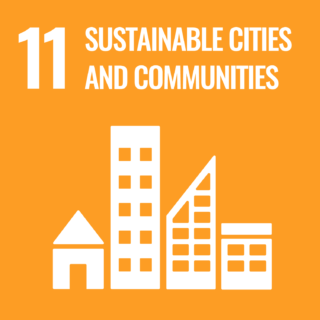
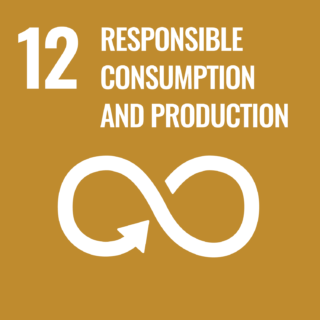
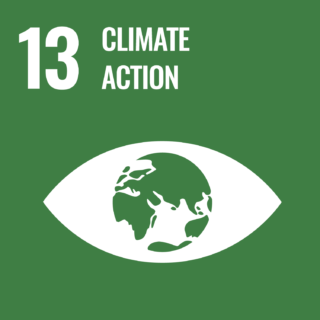
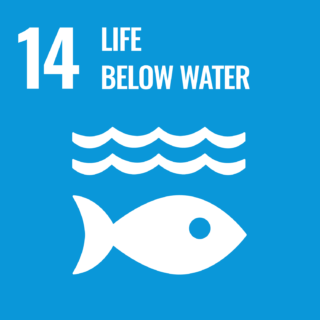
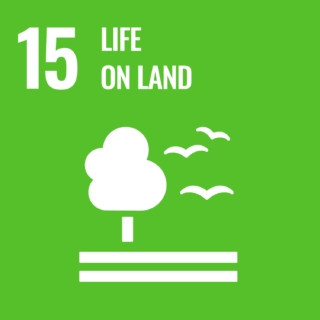
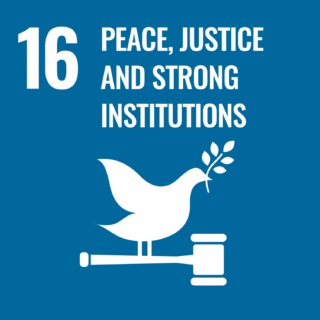
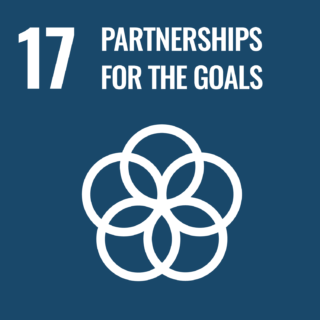
Grand Award 2023
- In the category of Regional Planning
-
Michael Van Valkenburgh Associates Inc.: USA
Gathering Place for Tulsa
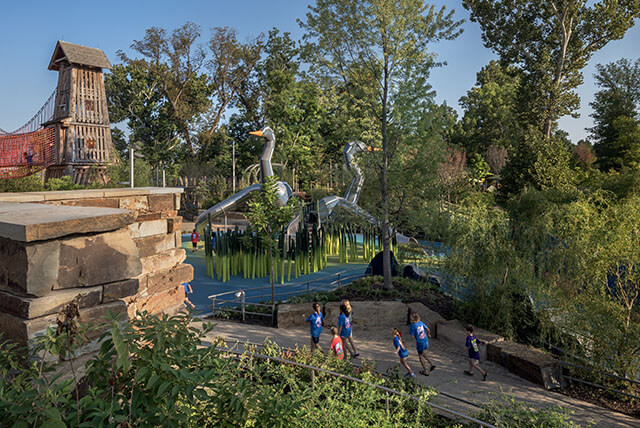
Gathering Place for Tulsa is a 66-acre park situated along the Arkansas River just two miles from the centre of Tulsa, Oklahoma. Developed in close collaboration with city officials and the local community, Gathering Place is a large and truly inclusive public park, welcoming and accessible to people of all ages, abilities, and backgrounds, that goes well beyond legal requirements with wide pathways offering generous turning space for people using mobility devices and ample room for relaxed sign language conversations. Its imaginative play areas, reconstructed ecosystems, and rich materiality combine to create a welcoming and engaging environment for underserved groups in the Tulsa community.
The jury said of this project:
An impressive public space project rooted in Universal Design principles, with extensive citizen consultation and involvement using a variety of methods. The inclusive design approach, including the iterative use of prototypes, mockups and models, is both exemplary and informative. The park demonstrates care and understanding, reflecting human diversity, and differing needs, abilities and economic circumstance. An exceptional space designed to enhance public wellbeing and connect people of different ethnicities, and within an urban community with a tragic history.




Gold Awards 2023
- In the category of Product design
- Sony Interactive Entertainment LLC: Japan
Access™ controller
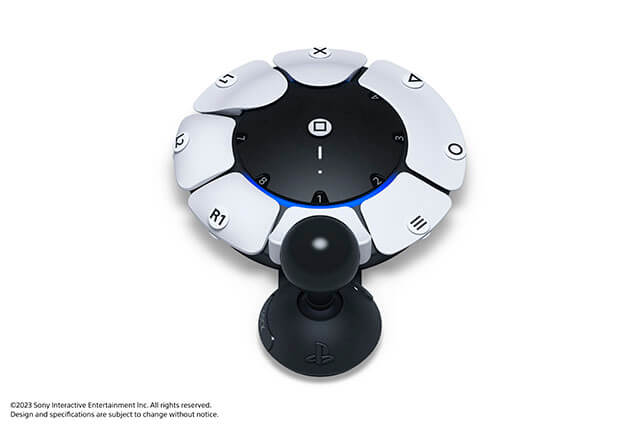
A highly customizable PlayStation® controller kit designed to help players with disabilities play games more easily, more comfortably, and for longer periods. The controller layout can be freely configured to suit different physical needs, and the design incorporates a variety of buttons and stick caps, coupled with a repositionable analog stick. It was developed with players with disabilities and in consultation with leading user organizations with the intention of broadening access and giving gamers fuller control of their gaming environment.
The jury said of this project:
The Access controller merges accessibility with the PS5's sleek design, ensuring that it is not only functional but also aesthetically pleasing. This approach emphasizes inclusive design, allowing for a more immersive and satisfying gaming experience for all users. It can be extensively personalized to reflect gamers’ physical and individual requirements, providing one flexible solution for all gamers avoiding any stigma associated with special product.

- In the category of Product Design
- Fujitsu Limited / FUJITSU FRONTECH LIMITED: Japan
FACT-X ATM
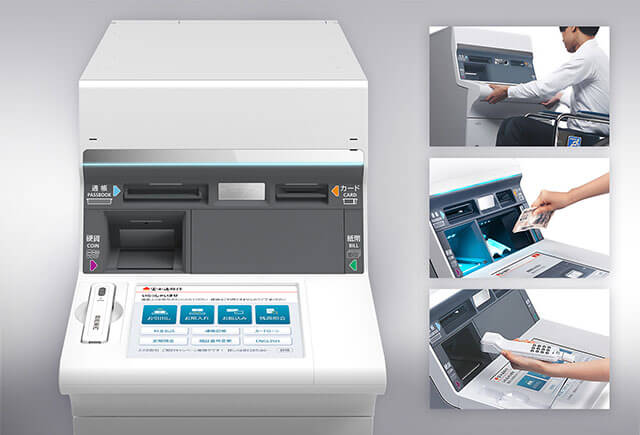
The FACT series was one of the industry’s first automated teller machines to adopt the universal design concept. Through continuous evolution, the series has come to be the leader among Japanese ATMs in terms of UD compliance, and contributed to the creation of a society in which more people can use financial services through ATMs. The latest model, FACT-X, has been designed to ensure that even more people can operate it with ease through, for example, improved visibility of the operating area, a unified color scheme across controls and screen guidance, increased text size and contrast and easy identification of user errors and how and where to correct them.
The jury said of this project:
The FACT-X is a significant step forward in ATM design, including many UD innovations to ensure safety and ease of use for all, and Fujitsu has given a clear lead in this field over time. The jury had some reservations about the lack of reference to user involvement in the design process that could have informed some design decisions.



- In the category of Healthcare and Welfare Design
- Sony Group Corporation / Sony Interactive Entertainment Inc.: Japan
Rehab/Well-being Gamification
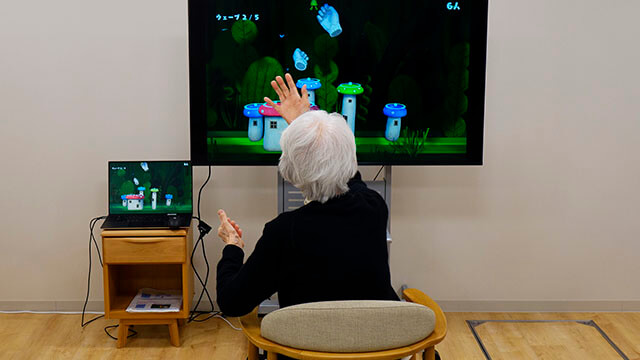
A new type of rehabilitation game for patients with paralysis in the upper limbs or on one side of the body, as well as seniors. With a focus on cognition, exercise, and repetition, and by incorporating gaming into the arduous process of rehabilitation, we aim to make it more enjoyable and easier to continue. A camera connected to a TV set tracks players hand movements and visualizes them on screen, encouraging them to move and react by catching falling elves and putting them on a mushroom.
The jury said of this project:
A smart collaboration between two Sony divisions, which prioritizes co-creation in the innovation process: instead of a control device the player’s hands are the interface. Sony has successfully eliminated major impediments to using gaming to support rehabilitation goals and deliver fun to the users.




- In the category of Healthcare and Welfare Design
- OUI Inc.: Japan
Eradicating Global Blindness and Visual Impairment with a New Ophthalmic Device - the Smart Eye Camera
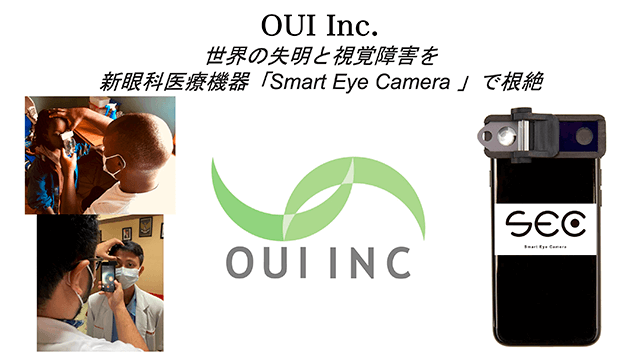
The global blind population is 43 million, with over half due to preventable conditions like cataracts, but under-developed and rural regions lack medical personnel and relying on paramedics with limited knowledge and resources. OUI Inc. aims to address this problem through an inclusive ophthalmic diagnostic model built around their Smart Eye Camera – a smartphone attachment that allows paramedics to capture and share images with remote ophthalmologists. An additional benefit comes from the capturing of location data to inform epidemiological research.
The jury described this project as:
A simple, practical and equitable solution to the diagnostic challenges associated with eye disease problems in Africa and other underserved countries where health facilities, personnel and equipment are scarce. It is simple to use with a little training, allowing for the rapid training of paramedics and non-professionals, effectively extending specialized medical care to rural communities.



- In the category of Healthcare and Welfare Design
- Toshiba Corporation / Toshiba Digital Solutions Corporation: Japan
ALWAYS® V Care Needs Assessment Support System
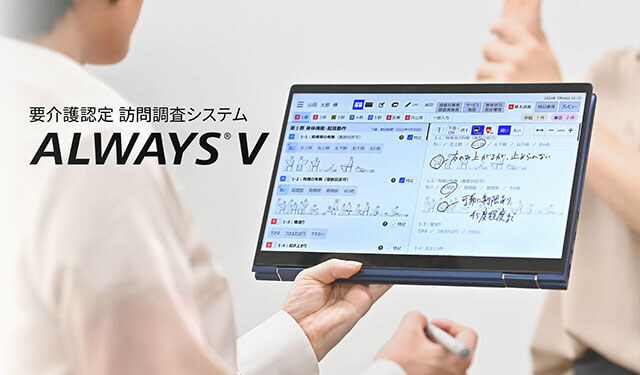
Improving the efficiency of care needs assessment is a pressing issue due to increasing demand combined with a significant skilled labor shortage. ALWAYS® V is a tablet PC application designed to enable social workers to assess the health conditions of would-be care recipients fully and carefully in the often limited time available. By switching freely between handwriting and touch input the application facilitates interaction with the client in parallel with efficient note-taking, thereby ensuring the accuracy and fairness of assessments and data-gathering.
The jury described this project as:
An efficient and standardized way of collecting health data and assessing needs for care that ensures objective and equal assessment of all patients. Japan is somewhat behind the curve in moving to paperless systems in healthcare, and this is an important step forward that can ensure fair and quality care for those in need in tandem with Japan’s care insurance system.




- In the category of Healthcare and Welfare Design
- HOYO SEISAKUSHO CO.,LTD / KYUSHU UNIVERSITY: Japan
Oral irrigator
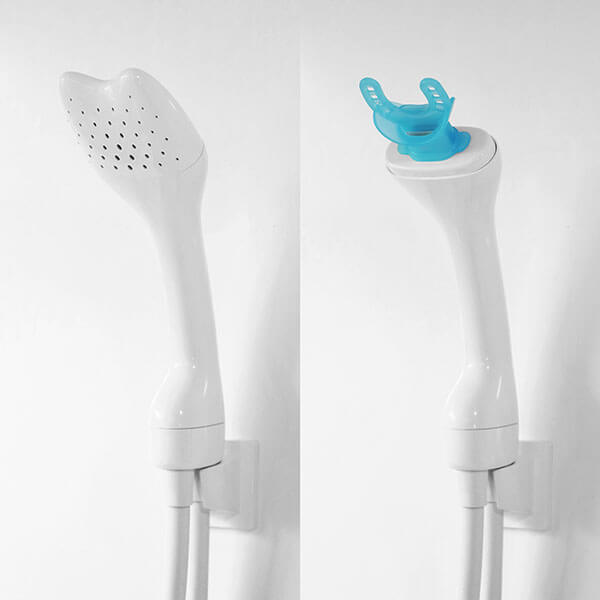
The Oral Irrigator facilitates full and efficient oral hygiene, which is particularly important for older people who need nursing care, while its simplicity and safety in use eases the burden on caregivers looking after them. By simply holding the mouthpiece in place, micro-bubbles are released that gently clean the entire oral cavity, while the rinsing water is safely discharged. The R&D team’s medical and design background helped to identify a specific need, and the product was developed through iterative testing with older people to ensure its fitness for purpose and acceptance by end-users.
The jury described this project as:
A useful tool for ensuring good oral hygiene for older people in need of care: a breakthrough solution for a rising issue with no effective solutions. User testing has resulted in a comfortable easy-to-use and effective device that is simple to maintain.



- In the category of Healthcare and Welfare Design
- Fujitsu Limited: Japan
Data Portability in Healthcare "Portable medical record"

Centralization of medical records, although well advanced in other countries is in its infancy in Japan, and this new cloud-based service offers a rapid introduction of data portability in the healthcare domain in a simple but highly organized format. Patients are able to proactively view and organize their health and medical care data via a smartphone app with a user-friendly interface, while healthcare professionals can review patient data on a larger screen presented in a dashboard format with clear graphics enabling quick and effective consultation and interpretation.
The jury said of this project:
Electronic Medical Record is still a new system in Japan but appears poised to become a norm. Secure and convenient access to medical information is an important step towards sharing and accessing medical records that will increase efficiency, reduce mistakes and facilitate communication. Importantly, the concept that each person's medical information belongs to the individual, not to the doctor, will be central to the future of human-centered healthcare systems.




- In the category of Co-Design
- Fujitsu Limited: Japan
Digital Technology Card - the ideation tool that connects UX and technical issue -
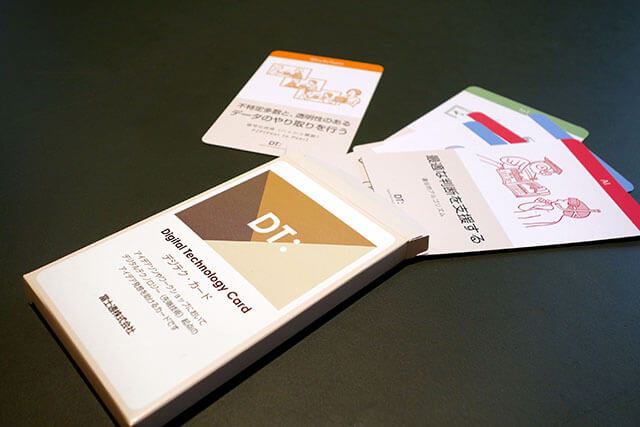
Digital Technology Cards are an ideation tool designed so that non-expert people can intuitively grasp the potential of digital technology and collaborate in the process of generating new ideas and solutions to real-life issues. The set consists of 27 cards targeted at accelerating digital transformation in key areas such as senior citizens facilities, NGOs, volunteer groups, local governments and commercial organizations, by encouraging the involvement of end users in the innovation and development of new digital services and solutions.
The jury described this project as:
A very interesting and useful tool to bridge the gap between experts and non-experts in the ideation and product development process in any business or organization. The goal is to co-create, facilitate hybrid collaborations and ensure that technology innovations are accessible and beneficial to all user groups, including the disadvantaged and those less familiar with emerging technologies.




- In the category of Interior Design
- BDP Quadrangle: Canada
Collaborative Spaces: Embracing Diversity and Inclusion at BDP’s Toronto Studio
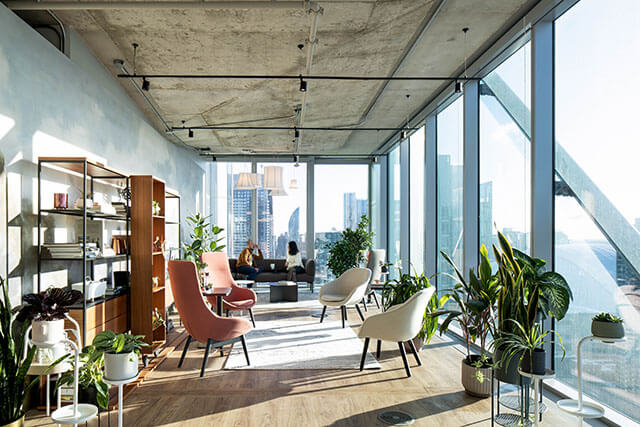
At BDP Quadrangle inclusive design underpins every project the company undertakes, as exemplified by their new studio and North American headquarter in Toronto. The company has developed an 18 point set of internal guidelines that go well beyond purely physical design considerations to create spaces within which all users feel equally considered, valued and empowered. The studio is an inspiring space that fosters collaboration and inclusion, accessibility and wellness, resulting in a healthy and resilient workplace for all.
The jury said of this project:
It is noteworthy that large employers have an appetite for inclusive design, and BDP’s list of 18 guidelines for better and more inclusive workspaces is good evidence of this, making its Toronto Studio a truly inclusive post-COVID workplace that accommodates different ways of working. However, the jury felt that some issue relating to navigation and orientation remained to be fully addressed.



- In the category of Interaction Design
- Sony Group Corporation: Japan
XR Catch
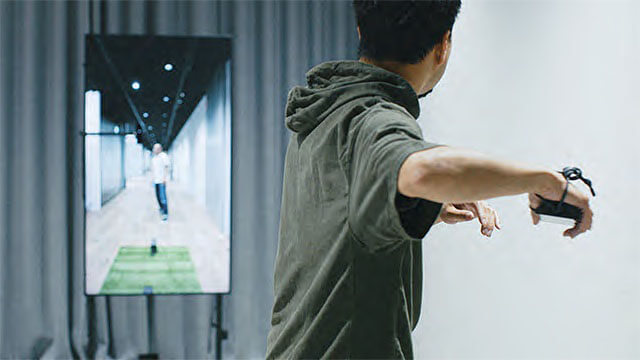
Inspired by the wish of a father with visual impairment to play catch with his son, the team at Sony developed XR Catch, a game played with virtual balls, which enables people of any age, with or without disability, to experience the joy of physical interaction—one of the inherent qualities of the game of catch. Realizing that the limitations of a “virtual ball” can positively stimulate the imagination of both players to create a game that anyone can enjoy was one of the many insights that the team at Sony gained from working with users on this project.
The jury said of this project:
Sony is one step ahead with this creative gaming solution for people with or without visual impairments offering a fun way to move and exercise together with others. The project exemplifies universal design by incorporating feedback from users of all ages and abilities to enhance the gaming experience. This collaborative development process ensures the game is enjoyable and accessible to a broad audience.



- In the category of Inclusive Culture
- Fujitsu Limited: Japan
Promoting "sensory room sports viewing experience" for children with developmental disabilities
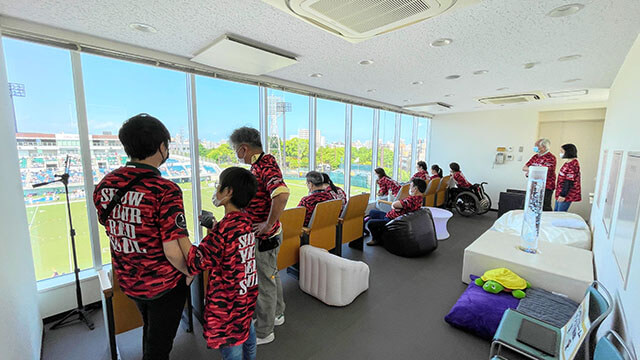
As part of their effort to promote an inclusive society and a better understanding of disabilities by empowering everyone to enjoy sports, the team at Fujitsu set up a sensory room sports viewing experience for children with developmental disabilities, a first in Japan. The team ran a successful trial of the sensory room over nine games of American football and women’s basketball, allowing children who are uncomfortable with loud noises, lights, and crowds, to cheer on players along with their families and free from threatening distractions.
The jury described this project as:
This interesting and praiseworthy initiative addresses a real need which receives little attention and for which few solutions exist by enabling children with developmental disabilities who are hypersensitive to sound and light to enjoy games together and with their families. It promotes inclusivity and awareness of developmental disabilities and offers a model for inclusive sports facilities.



- In the category of Housing and Architecture
- Washington State School for the Blind (Client) / Mahlum (Architect) / Chris Downey (Blind and Low Vision Consultant): USA
Life Skills Training Center at Washington State School for the Blind
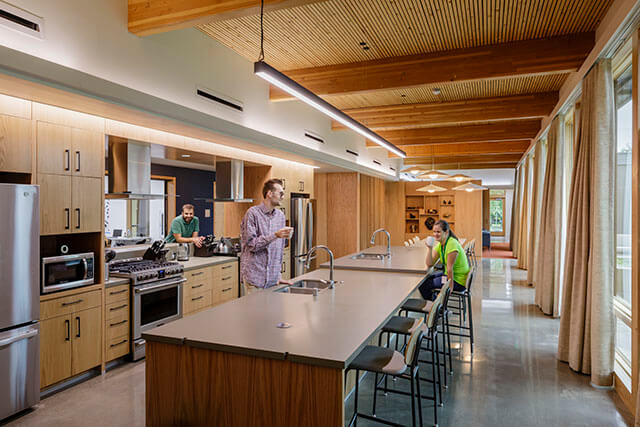
With a mission to empower young adults experiencing blindness or low vision to navigate adulthood, the Life Skills Training Center at the Washington State School for the Blind goes beyond providing the tools necessary to live an independent life by presenting everyday objects and building components in multiple formats and by introducing residents to different ways of interacting with products and equipment essential to key activities of everyday life. The goal is to equip participants with an enhanced ability to live independently and to articulate their specific needs based on real life experience of the options available to them.
The jury described this project as:
A great example of a practical, user-centric approach blending the concepts of Universal Design and Design Justice to empower and enable visually impaired young adults to influence decisions about their environment and equip them with the skills they need to live independently and with confidence.




Silver Award 2023
- In the category of Healthcare and Welfare Design
- Mitsubishi Electric Corporation: Japan
Delivery Robot Service System for Hospitals
An autonomous, multi-purpose delivery robot system with interchangeable carts designed to meet a multiplicity of hospital needs. Its sensing and control system allow it to automatically avoid obstacles and get on/off elevators. It can safely and autonomously travel vertically and horizontally inside buildings, contributing to labor savings, while its friendly and reassuring appearance make it readily accepted by staff and patients alike.
The jury described this project as:
A charming and hard working, flexible robot that will relieve precious personnel of heavy lifting, fetching and carrying, so paving the way for people-friendly robotics to free up caretakers and allowing them to focus on all important human contact and interaction.



- In the category of Healthcare and Welfare Design
- ITO EN, LTD.: Japan
Delicious and easy-to-drink thickened green tea for universal design, "Itoen Torori Green Tea"
A new, universal design thickened green tea beverage that meets the needs of those with swallowing disorders. Torori Green Tea addresses two key challenges for care providers, the time and effort required to thicken tea, and the potential for the thickener to mask the flavor of tea. These are met by combining a natural thickener that does not interfere with the taste and an easy-to-open-and-pour bottle design to create a convenient product for all.
The jury said of this project:
This is a familiar issue and the critique is correct: commonly thickeners change the taste of a beverage and are not stable long-term. The development of Torori Green Tea offers an interesting use of UD as a way of understanding the needs of specific users and arriving at a solution that works for caregivers and tea drinkers alike.


- In the category of Social Inclusion
- Shekulo Tov Group: Israel
'SAME' Model for meaningful & innovative leisure & independent social inclusion in the community for people with disabilities
In 2005, Shekulo Tov established an innovative program that provides social & recreational services for 3,000 people with disabilities in Israel. The program is based on the SAME model of meaningful and independent recreation currently supporting active independence for people with disabilities throughout Israel. In the past year Shekulo Tov has extended this service as a series of dedicated and culturally adjusted on-line sites offering people with disabilities from both Jewish and Arab communities access to appropriate social and recreational activities.
The jury said of this project:
The program focuses on enhancing mental health, self-confidence, and self-development to reduce loneliness through community activities. The introduction of on-line sites further extends the program's reach, allowing individuals with disabilities in both Jewish and Arab communities to participate in social life independently and inclusively.





- In the category of Imagining the Future
- College of Social Sciences, Ritsumeikan University, Satoshi Nagano Seminar: Japan
A Project That Allows Elderly People to Create Their Own Lives
The Game of Life from Age 60 offers older people with an opportunity to think about their future lives, and explore their hopes and aspirations as a way of helping them to think about ageing positively and proactively. In the process, insightful data is captured that can then be used to enhance the understanding of older people’s changing life goals and needs and improve their care.
The jury described this project as:
A an excellent tool for advance care planning—always important and often neglected. However, given that the average Japanese lifespan is almost 25 years past 60, there is a missed opportunity to think beyond end-of-life planning. People in their 60s are still relatively young, and the focus of this game might be perceived as stigmatizing if not done with care.




- In the category of Product Design
- RANAOS LLC: Japan
NuLAND, new-generation school bag that does not burden the environment or the children's body.
A new and improved lightweight schoolbag for the Japanese market where previously there was only one choice. The NuLAND schoolbag features a number of important innovations including significant weight reduction, recyclable materials and inclusive, easy-to-use functions at a competitive price point, offering children and parents new child-friendly options.
The jury described this project as:
The traditional Japanese schoolbag reinvented with considerable improvements and with children’ needs in mind. Additionally, the use of recyclable fabrics demonstrates a commitment to sustainability. Unfortunately we were given no information in terms of inclusion and catering for children with special needs or a lack of strength or mobility.


- In the category of Product Design
- Toshiba Lifestyle Products & Services Corporation: Japan
Toshiba Cordless Steamer TAS-MX6
An easy–to-use clothes steamer that can be operated in both cordless and corded mode as required and depending on the situation. A careful and detailed product development process focused on ease of grip and on visibility of the water level, facilitating versatile use in horizontal and vertical orientation, and at all angles. The symmetrical design allows for both left- and right-handed use and the closed handle ensures a safe grip and secure operation.
The jury described this project as:
A user-friendly product that serves both as an iron and a steamer designed to reduce wrist strain by reducing the weight and allowing operation at various angles. Unfortunately no clear UD process or user involvement was described.

- In the category of Fashion Design
- KUTO Co., Ltd.: Japan
Easy one-handed dressing: Through Sleeve
For those who have difficulty dressing themselves and find their lifestyle restricted because of this, Kuto Co. has developed an easy-to-put-on shirt that gives disabled people access to situationally appropriate clothing, enabling them to enjoy fashion again. Key design features address the most common problems experienced by those who have restricted arm movement and, coupled with magnetic fastenings, help eliminate everyday challenges, offering users a new sense of freedom.
The jury described this project as:
A well-designed shirt that looks just like any other shirt while meeting the special needs of otherwise excluded people and taking into account the importance of being well dressed despite restricted arm movement.


- In the category of Fashion Design
- ELLE ROSE CO.,Ltd.: Japan
Bust Flattening Innerwear "Nstyle Half Top/Tank Top"
Elle Rose has developed a range of innovative Bust Flattening Innerwear crafted for individuals desiring a more compact and diminished bust appearance. Existing underwear designed to flatten the bust typically targets larger bust sizes and can be uncomfortable, especially if worn for long periods, whereas this innovative innerwear is offered in five sizes ranging from XS to LL. The product features two specialized panels that offer robust support from beneath, redistributing volume upwards. This guarantees comfort and a gracefully healthy, flatter bust silhouette.
The jury described this project as:
Underwear designed to meet the need for a greater range of gender focused products. Elle Rose Bust Flattening Innerwear has several user-friendly features: it is lightweight, easy to put on and comfortable in use, but unfortunately no evidence or description of user involvement and a UD in the product development process was provided.



- In the category of Public Space Design
- Research Center for Advanced Science and Technology, The University of Tokyo / Barrier Free Co,Ltd / DAIDO KOGYO CO,LTD: Japan
Stair lift device IKOO - Self-lift coexisting with historical buildings -
A site-specific stair lift design enabling wheelchair access to the basement area of an historically significant building, its design integrates user psychology, functional shapes, materials, and colors, to create a stair lift that respects usability evaluations from wheelchair researchers. The stair lift’s visual characteristics respects the historical significance and architectural philosophy of the building, prioritizing environmental harmony for users.
The jury described this project as:
The research, user involvement and careful design of this universally designed and bespoke lift is commendable for the attention given to every facet of the user interface—buttons, safety bars, verbal communication—and for the iterative user testing involved. However, as a one-off it is inevitably an expensive solution.




Bronze Award 2023
- In the category of Regional Planning
- Kawasaki City Nakahara Ward / Fujitsu Limited: Japan
Machikado Project - Your Voice Makes the City - Community development using people-friendly digital technology -
The goal of Machikado Project is to promote community development and raise residents’ interest in their city by encouraging comments from the widest possible range of inhabitants. It is a citizen participation-driven collaboration involving private citizens, government, and businesses. Using people-centered design and user-friendly digital technologies, the team created and demonstrated the effectiveness of a system that encourages residents to know more about their city and to convey their feelings about it.
The jury described this project as:
Addressing the limitations of existing digital citizen participation platforms by lowering barriers to entry, thus encouraging a broader spectrum of community members to participate in the development of their community, but with limited input options and no clear follow-up strategy.



- In the category of Regional Planning
- Chicabi Inc.: Japan
CHIBA COW’S PARK
Although Chiba is the birthplace of dairy farming in Japan, Chiba-city Dairy Cattle Breeding Farm found itself in difficulty due to a decrease in the number of dairy farmers. Chicabi Inc., which specializes in vision-driven creativity, took over the business and brought a solution to the problem in the form of an experience-based campsite where cows live, offering visitors opportunities to reconsider how they deal with nature and what it means to be human.
The jury described this project as:
Imaginatively responding to negative trends in the dairy industry by turning the original enterprise into an infotainment park, but lacking in clear Universal Design elements, although delivering socially and culturally.




- In the category of Regional Planning
- GS E&C / D.ONE / SAMSUNG C&T RESORT: Korea
THE GREENERY 189
Conceived as an extension of the local landscape, and featuring natural surroundings combined with barrier-free design in an urban context the proposed reconstruction of Gaepo Jugong Complex 4 sets out to create a lively heart for the adjacent community by respecting all the existing qualities of the site and unfolding delightful spaces for its residents.
The jury described this project as:
A beautiful green urban area, addressing the importance and value of trees, plants and water in an urban environment, both for public wellness and to improve air quality, but unfortunately no evidence of user involvement or testing although it appears to be inclusive for all.



- In the category of Regional Planning
- KANSEI Company / T2P Architects Office: Japan
Plaza_Circle/Mizu-Mamori-Toilet
The proposed Plaza Circle/Mizu-Mamori-Toilet is intended as an accessible and highly visible public toilet for Atsugi City in Kanagawa Prefecture. In addition to acting as a place for daily interaction, it will also provide an evacuation site in the event of a disaster. By creating a space with pipes and water as its main features the designers hope that people will be inspired to think about the value and importance of water as they come face to face with nature.
The jury said of this project:
A well-designed multi-function public toilet situated centre stage in a public space is a bold statement. The importance of public toilets should not be underestimated and this one is a good example, unfortunately lacking in some of the essential requirements of a universally designed toilet, including effective color contrast and some functional elements. User involvement or testing is not mentioned.


- In the category of Communication Design
- Assistant Professor Dr. Rachapoom Punsongserm (Faculty of Fine and Applied Arts, Thammasat University): Thailand
FT Manifest UD (Thai Universal Design Font)
The FT Manifest UD typeface has been meticulously designed to assist Thai readers experiencing blurred vision. Empirical evidence was taken into account to ensure improved legibility and visibility, and the distinct feature differentiation of each letterform was crafted with care to enhance readability.
The jury described this project as:
A common problem experienced by people with low vision, blurred vision, is elegantly addressed by this font design. Focusing on legibility and low vision that ageing populations experience is commendable, and the development of the font is clearly evidence based, unfortunately there is a lack of lead user involvement throughout the process, which could have led to valuable insights.



- In the category of Housing and Architecture
- SHISEIDO Co., Ltd. / SHISEIDO CREATIVE Co., Ltd.: Japan
Playing with Beauty, Touring Beauty, Understanding the Cycle of Beauty - Designing a factory that is open to customers.
Shiseido's factories maintain quality, safety, and sustainability in all processes, from raw material procurement to the delivery of products to customers. In order that its customers can learn about the company’s idea of beauty, Shiseido has designed a set of interactive and universally accessible factory tour facilities that can be enjoyed by anyone, regardless of age, ability, nationality, gender or other factors.
The jury described this project as:
The intention behind these experience-based tour facilities is to stimulate learning and imagination through workshops and sensory experiences accessible and enjoyable for a wide range of individuals, however, the evidence provided to support this project does not reflect Shiseido’s otherwise clear commitment to universal design.



- In the category of Fashion Design
- Shonan Universal Design Institute / ASANO NENSHI Co., LTD: Japan
Easy-to-wear bathrobe "BATH HAORU"
BATH HAORU, is a bathrobe designed to be easy to put on, in particular by people who have limited movement of their upper bodies.
The jury described this project as:
By incorporating kimono-style sleeves, this design enhances the bathrobe’s ease of use making it accessible to a wide range of users, however the product appears to still be at concept stage, and despite the designer's personal experience, these is no mention of user research.

- In the category of Product Design
- Kenkousya ltd.: Japan
SlideNote
Kenkousya’s SlideNote can create a single notebook by binding paper sheets together without punching holes. With a one-touch operation requiring very light force it can even hold a single sheet of paper. The goal is to shift perception of notebooks from the volume to the page, and at the same time to increase the productivity of handwritten output.
The jury described this project as:
A practical and clever way for students and anyone else needing to organize and work with paper notes, with a well designed and easy-to-use clip. Despite its clear usability there is no evidence of a universal design process.



- In the category of Housing Equipment
- Mitsubishi Electric Corporation: Japan
A wall-mounted circulating fan that improves and maintains indoor air quality without interfering with everyday life
A wall-mounted fan designed for offices and commercial spaces with built-in air-purifying and deodorizing functions The efficacy of the Health Air Unit is restored when washed, making filter replacement unnecessary, while automated operation maintains clean air at all times. The slim design and easy installation enable safe wall mounting.
The jury described this project a:
Another good example from Mitsubishi, prioritizing simplicity and usability, but without clear evidence of a universal design process.


- In the category of Housing Equipment
- Mitsubishi Electric Corporation: Japan
Large-Capacity Home Freezer U22
A large-capacity, compact freezer designed to meet the now increased bulk buying and freezing needs of dual income households that have been reshaped by their pandemic experience. The two-door design improves usability and energy efficiency by controlling leakage of cold air and stabilizing the interior temperature to keep food tasting good longer.
The jury described this project a:
Although not clearly universal design, the evident empathy with users in terms of ease of operation and addressing changing consumer needs in terms of more, better storage for both couples and singles wishing to avoid frequent shopping.

Award of Excellence for Student Design Challenge 2023
- In the category of Communication Design
-
GOTO YUNA: Japan
Application to deepen understanding of Braille/finger alphabet
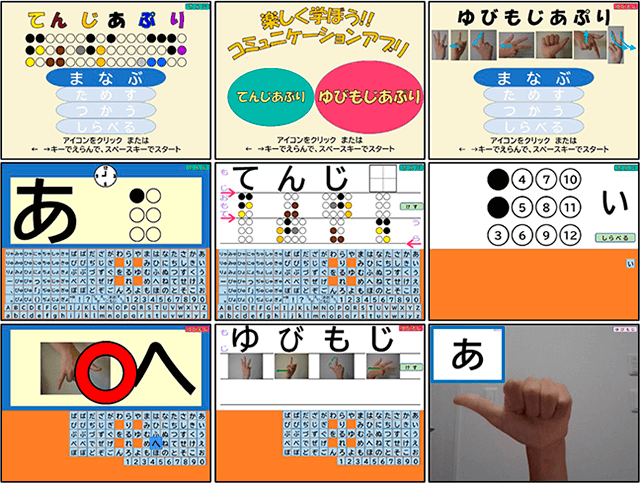
Most people have few opportunities to learn Braille and finger spelling, and so are not fully able to communicate with people who rely on these systems. To address this issue, Yuan Goto has created an application that makes learning Braille and finger spelling fun and easy, in the hope that this application will encourage people to deepen their understanding of these ways of communicating.
The jury described this project as:
This student’s approach can transform people’s perception of Braille and finger spelling and the jury was forcefully impressed by her empathy and creativity. An excellent project, even more impressive considering the age of the candidate.



Student Design Challenge Award 2023
- In the category of Product Design
- Fujian Agriculture And Forestry University (Shunbin Zhou/Chenxin Yang/Jun Huang): China
A+Children's clothes hanger
The lack of social interaction and communication skills is the biggest challenge for children with autism. In response, this floor-standing clothes hanger design exploits the principle of sound resonance in the form of a fun game that encourages children with autism to engage in pro-active listening, stimulating the desire for social interaction in autistic children and cultivating effective communication skills.
The jury described this project as:
The idea and intention is excellent, but the project lacks user involvement, and is not convincing in terms of design solution.



Citations for Grand Awards (1)
Citations for Gold Awards (12)
Citations for Silver Awards (9)
Citations for Bronze Awards (10)
Citations for Award of Excellence for Student Design Challenge (1)
Citations for Student Design Challenge Award (1)
Announcement of IAUD International Design Award 2023 Winners





